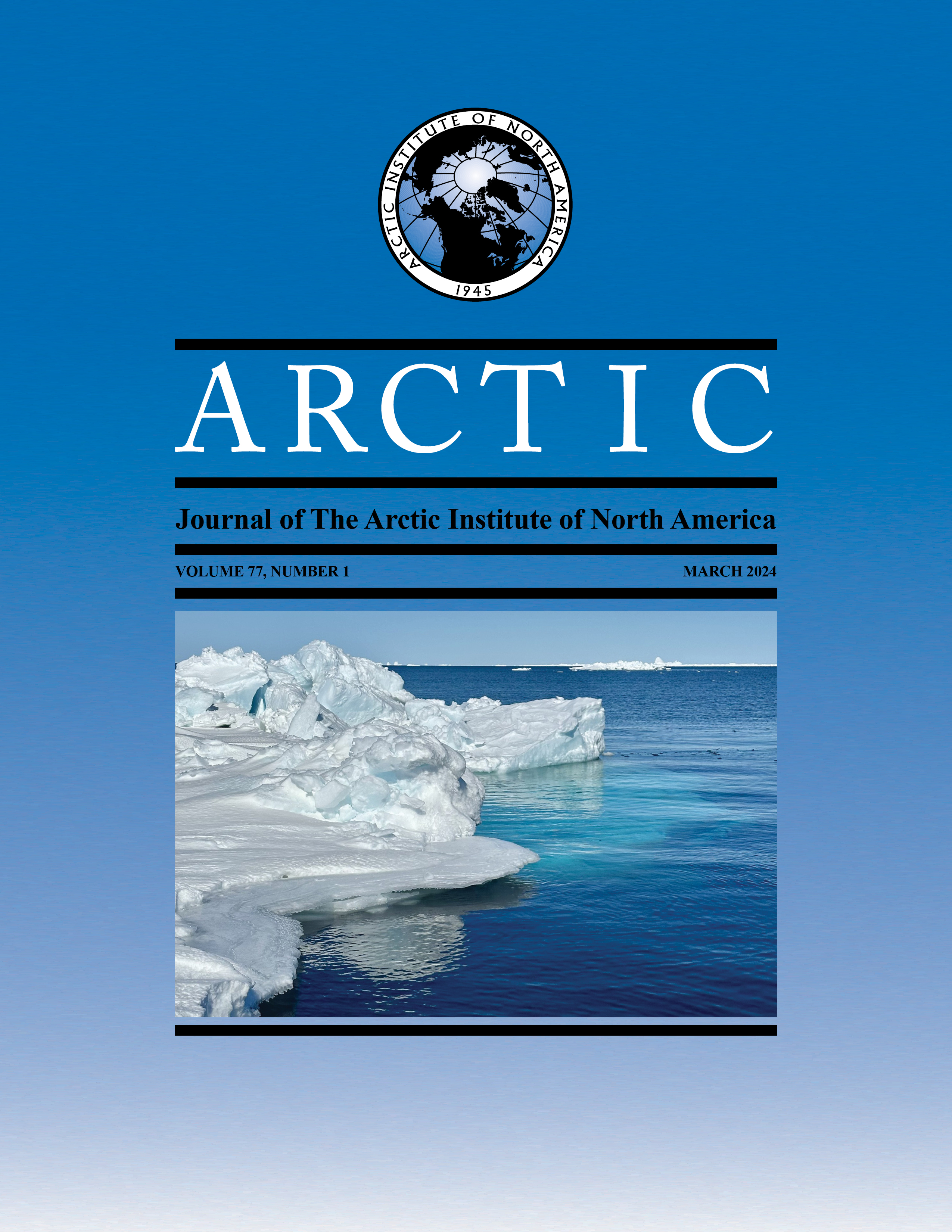Latitudinal Dispersal of Southern North American Glacial Refugial Plants within Yukon, Canada
DOI:
https://doi.org/10.14430/arctic79156Abstract
This study investigates the distribution of southern North American glacial refugial migrants that have invaded Yukon (Canada) since the Last Glacial Maximum (LGM), which began about 9500 years ago. The analysis was based on indigenous vascular plant occurrences that were stratified according to 0.33˚ latitudinal bands. Among 90,397 occurrence records, about 37% were postglacial migrants as opposed to former members of the Eastern Beringian flora. Most migrants probably moved northward from LGM refugia in the western U.S. region (Montana-Idaho-Wyoming) and, to a lesser extent, from the midwestern United States, but several were potentially from a Pacific coast refugium in westernmost Washington-Oregon-northern California. Gradients in taxa composition and richness occurred, with Beringian taxa increasing and migrant taxa decreasing at greater latitudes (+3 vs −0.5 taxa per degree, respectively) based on statistically significant regression trends. An interpretation of ordination results based on taxa presence and absence suggests south-to-north migrating plants are strongly influenced by climate. Only half of all Yukon migrant taxa have geographical ranges that extend beyond the latitudinal centre of the territory. Possible constraints on greater dispersal include competition from pre-existing vegetation, colder northward climates, and the presence of the Ogilvie and Wernecke Mountains across the latitudinal centre of the territory. Just over half (24 of 44) of the taxa that occurred in only one latitudinal band were located immediately north of the southern Yukon border, which suggests glacial refugial migrants are still invading Yukon.
Downloads
Downloads
Published
Issue
Section
License
Copyright (c) 2024 ARCTIC

This work is licensed under a Creative Commons Attribution 4.0 International License.


